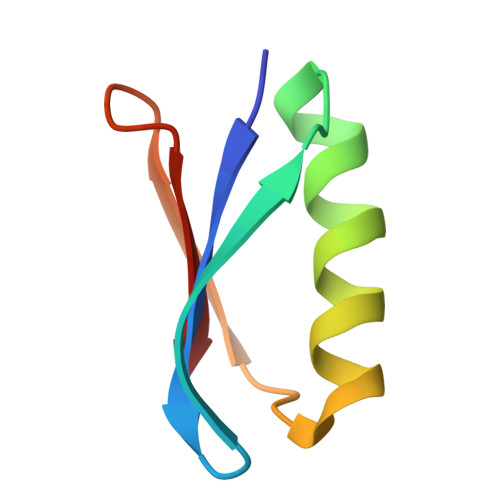Determination of protein structures in the solid state from NMR chemical shifts.
Robustelli, P., Cavalli, A., Vendruscolo, M.(2008) Structure 16: 1764-1769
- PubMed: 19081052
- DOI: https://doi.org/10.1016/j.str.2008.10.016
- Primary Citation of Related Structures:
2K0P - PubMed Abstract:
Solid-state NMR spectroscopy does not require proteins to form crystalline or soluble samples and can thus be applied under a variety of conditions, including precipitates, gels, and microcrystals. It has recently been shown that NMR chemical shifts can be used to determine the structures of the native states of proteins in solution. By considering the cases of two proteins, GB1 and SH3, we provide an initial demonstration here that this type of approach can be extended to the use of solid-state NMR chemical shifts to obtain protein structures in the solid state without the need for measuring interatomic distances.
Organizational Affiliation:
Department of Chemistry, University of Cambridge, Lensfield Road, Cambridge CB2 1EW, UK.

















